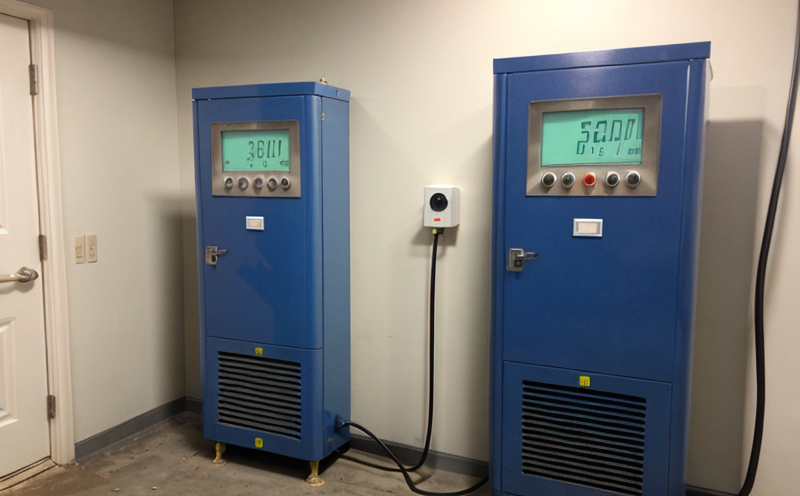EN 15267 Certification Testing of Air Quality Monitoring Systems
The European standard EN 15267 sets forth stringent requirements for the certification and testing of air quality monitoring systems used in mining operations. This certification ensures that these critical systems meet the highest standards of accuracy, reliability, and safety to protect miners' health and safety while enhancing overall operational efficiency.
The scope of EN 15267 certification is broad, encompassing not just technical specifications but also the practical implementation in mining environments. The standard covers various types of air quality monitoring systems, including gas detectors, dust sensors, and particulate matter analyzers. It ensures that these devices are capable of providing accurate measurements under extreme conditions, such as high temperatures, humidity, and dust levels prevalent in underground mines.
The testing process for EN 15267 involves several rigorous stages to validate the performance and reliability of the air quality monitoring systems. Initially, the equipment undergoes a series of functional tests to ensure it operates correctly under both normal and adverse conditions. This includes checks on power supply stability, communication protocols, and data logging capabilities.
Next comes the calibration testing, where the system's accuracy is verified against known standards using precision instruments like gravimetric balances for particulate matter or gas chromotographs for specific gases. These tests are crucial as they ensure that the monitoring systems provide accurate readings even in complex and challenging environments.
The performance evaluation involves real-world scenario testing, where the system's ability to detect and respond to changes in air quality is assessed. This includes simulating various gas concentrations and particulate loads that miners might encounter underground. The tests also evaluate how quickly the system responds to changes and whether it can maintain stable readings over extended periods.
Additionally, EN 15267 certification requires robust software validation to ensure that the monitoring systems can process data accurately and transmit it reliably to the appropriate control centers or remote monitoring stations. This includes testing the software for its ability to handle large volumes of data without degradation in performance or accuracy.
The standard also emphasizes the importance of user interface design, ensuring that operators receive clear and concise information about air quality conditions. This not only enhances safety but also supports informed decision-making by management and workers alike.
EN 15267 certification is a critical step in ensuring compliance with international mining regulations and industry best practices. It provides assurance to stakeholders, including regulatory bodies, insurers, and investors, that the air quality monitoring systems are fit for purpose and reliable under all operating conditions.
The benefits of obtaining EN 15267 certification extend beyond mere compliance; it also enhances a company's reputation as a leader in safety and sustainability. By meeting these stringent standards, mining companies can demonstrate their commitment to worker safety and environmental responsibility, which is increasingly important for attracting investment and maintaining public trust.
Moreover, certified systems are less likely to fail during critical moments, reducing the risk of accidents and health issues among miners. This not only improves operational reliability but also contributes to a safer working environment, thereby enhancing overall productivity.
The certification process is rigorous and involves multiple stages, ensuring that only the highest quality air quality monitoring systems are approved. This commitment to excellence aligns with broader industry trends towards sustainability and safety in mining operations.
Benefits
The benefits of EN 15267 certification for air quality monitoring systems are multifaceted, encompassing both operational efficiency and worker safety. Firstly, certified systems provide accurate and reliable data, which is essential for effective decision-making in mining operations.
Secondly, compliance with this standard enhances a company's reputation among stakeholders, including investors and regulatory bodies. This can lead to increased trust and support from these key groups, which is crucial for long-term success.
Thirdly, certified systems reduce the risk of accidents and health issues by ensuring that air quality parameters are accurately monitored and controlled. This not only protects workers' health but also supports a safer working environment, which in turn enhances overall operational efficiency.
Finally, meeting these stringent standards can provide a competitive edge in the market, as it demonstrates a company's commitment to safety and sustainability. In an increasingly environmentally conscious world, such credentials are becoming more valuable than ever.
Environmental and Sustainability Contributions
The implementation of EN 15267 certification in air quality monitoring systems plays a vital role in environmental sustainability. By ensuring that mining operations meet the highest standards for air quality, these systems contribute significantly to reducing harmful emissions and improving overall air quality.
Accurate monitoring allows for timely interventions, preventing potential environmental damage from excessive emissions of gases like methane or carbon dioxide. This not only protects the local environment but also contributes to global efforts in climate change mitigation.
The use of certified systems also supports sustainable practices by optimizing resource usage and minimizing waste. By providing real-time data on air quality, these systems enable mining companies to adjust their operations dynamically, reducing unnecessary energy consumption and other resources.
Furthermore, the certification process itself promotes a culture of continuous improvement in environmental management. This encourages ongoing efforts towards greener practices and innovative solutions that benefit both the environment and society at large.
Competitive Advantage and Market Impact
Gaining EN 15267 certification for air quality monitoring systems offers significant competitive advantages in the mining industry. Firstly, it positions a company as a leader in safety and sustainability, which is increasingly important to stakeholders such as investors and customers.
Secondly, certified systems enhance operational efficiency by providing accurate and reliable data, leading to better-informed decisions that can optimize processes and reduce costs.
Thirdly, the certification process itself fosters a culture of continuous improvement, encouraging ongoing efforts towards excellence in safety and environmental management. This not only enhances a company's reputation but also supports long-term sustainability and resilience.
Lastly, meeting these stringent standards can provide a competitive edge in the market, as it demonstrates a company's commitment to safety and sustainability. In an increasingly environmentally conscious world, such credentials are becoming more valuable than ever.





